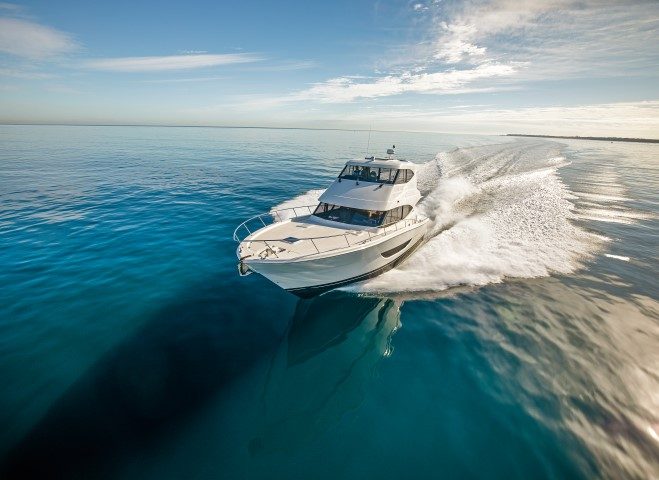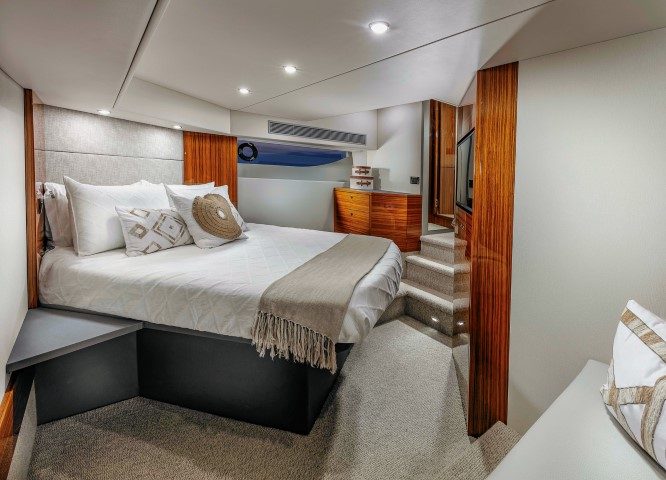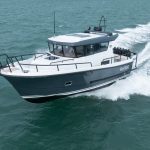‘Behemoth’ is a word which springs to mind or, perhaps more nautically, ‘leviathan’.
- Bluewater hull
- Quality finishes throughout
- Full beam master cabin
- All the comforts of a bigger boat in 51 feet
- Plenty of style, and substance
- Shaft drives help trim balance



















